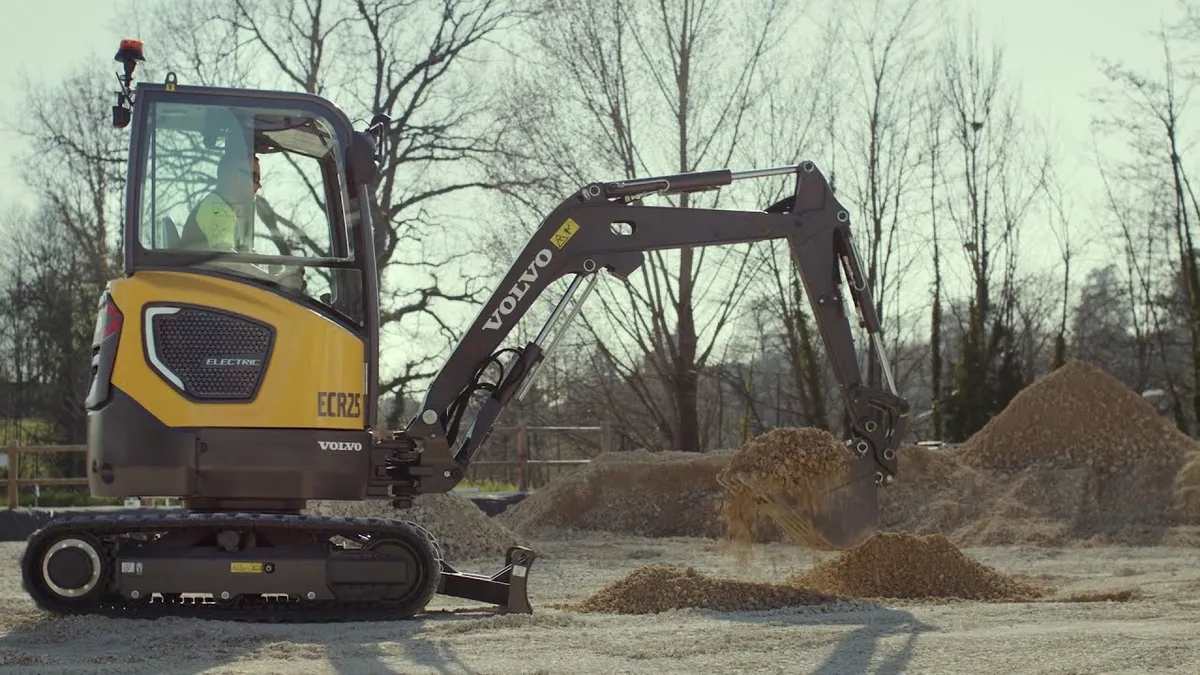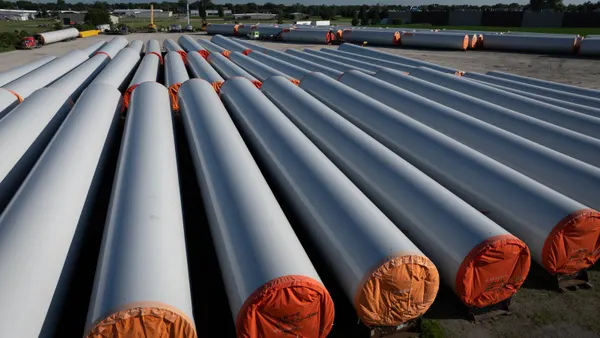Contractors continue to adopt electric equipment, more than “what is probably perceived,” said John Ryneska, business development manager at Trader Interactive, an online marketplace for heavy work equipment.
For instance, some large contractors using this newer technology, said Ryneska, include:
- Houston-based Quanta Services.
- Henderson, Colorado-based MYR Group.
- Coral Gables, Florida-based MasTec.
- San Jose, California-based Rosendin Electric.
- San Jose, California-based Cupertino Electric.
That’s because as construction costs remain high compared to pre-pandemic, a switch to electric construction equipment brings lower operating and maintenance costs, as well as federal and state tax credit incentives.
Here, Ryneska talks with Construction Dive about electric construction equipment, its benefits and its impact on the construction industry.
Editor’s note: This interview has been edited for clarity and brevity
CONSTRUCTION DIVE: You mentioned more jobsites are using electric construction equipment. Which pieces of equipment specifically and what are these replacing?
JOHN RYNESKA: The small compact excavator stands out as a widely embraced electric construction equipment option, having existed as an electric vehicle for a while among brands like BOMAG, Case, Caterpillar, Develon and Doosan Bobcat.
Advancements in battery technology are enabling manufacturers to extend electrification to larger machinery like cranes, mining trucks and heavy-duty equipment, too.

The enhanced battery capacity empowers these larger machines to operate for more extended periods, offering original equipment manufacturers a wider array of electric choices capable of tackling the most rigorous tasks traditionally done by diesel-fueled equipment.
What are some benefits of switching over to electric construction equipment? What are some pain points?
Switching to electric construction equipment brings environmental benefits by reducing emissions and noise pollution.
It also lowers long-term costs through decreased energy and maintenance expenses. In addition, electric-powered machinery is proving to be competitive with the best diesel-operated equipment currently available in the market.
For example, in a comparison by construction equipment manufacturer Volvo on their electric units and diesel counterparts, they found EVs exhibited a substantial reduction in engine run time due to the absence of idling. Unlike traditional diesel engines, which have extended idle periods, this characteristic of electric vehicles contributes to a more cost-effective operation.
However, higher upfront investment and limited charging infrastructure are challenges to consider.
That is to say, there are still limitations on electric equipment that manufacturers are working through such as operating weight limits and estimated repair costs. Also, adapting to electric equipment may require operator training, and the availability of certain models can vary.
Is the electric construction equipment manufactured in the U.S.? Obviously, there's a push to bring EV manufacturing back to the U.S., does that trend include the manufacturing of electric construction equipment?
As the push for sustainability and environmental responsibility grows, many manufacturers are expanding their production capabilities to include electric construction machinery within the U.S. This shift aligns with the broader movement to localize manufacturing and promote the domestic production of EVs and related technologies.
Moog and Green Machine Equipment, two U.S.-based companies, have partnered with several original equipment manufacturers over the past few years to assist them with the development of their electric machines. Examples of this include Moog partnering with Komatsu and Green Machine partnering with Doosan Bobcat.
Any other trends around electric construction equipment you think are important to follow?
It should be noted that advancements in battery technology are ushering in an era of extended range and heightened performance for electric construction equipment.
Within this landscape, select manufacturers are delving into innovative hybrid solutions, blending electric power with traditional fuels to reduce emissions and heighten operational efficiency.
Meanwhile, government-driven incentives and stringent regulations continue to accelerate the embrace of electric alternatives, while the expansion of charging infrastructure underscores the practicality of this transition.
A recent example is the Clean Off-Road Equipment Voucher Incentive Project (CORE) taking place in California.
CORE is a multimillion-dollar incentive initiative designed to motivate users of off-road equipment in California to buy or lease presently available zero-emission off-road machinery. The aim is to counterbalance the elevated expenses associated with zero-emission technology by offering an immediate purchase discount. This incentive includes a large variety of qualifying equipment from professional landscaping equipment to construction and more.
Another incentive was included in the Inflation Reduction Act where, beginning in January 2023, purchasers of qualifying electric equipment received a tax credit. This tax credit includes 15% of the vehicle purchase price for plug-in hybrid electric vehicles and 30% of the vehicle purchase price for EVs, including heavy equipment.















